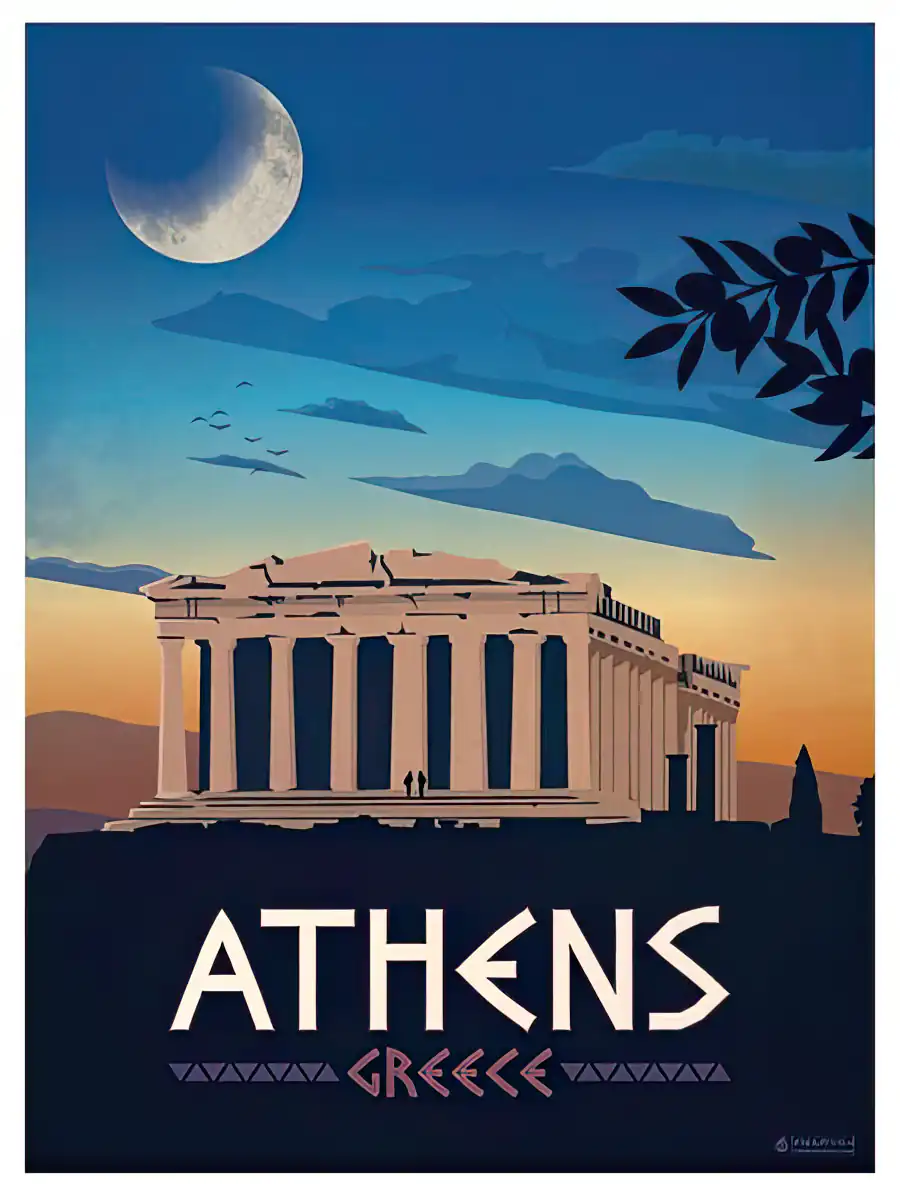Parthenon Facts
History of the Parthenon
-
The origins of the sacred use of the great limestone rock rising from the Attic plain are unknown. They were forgotten long before the writing of the first recorded histories of Athens.
-
Neolithic remains discovered on the slopes of the Acropolis indicate a continuous settlement on the hill from at least 2800 BCE, well before the Minoan and Mycenaean cultures that later gave birth to the archaic Greek.
-
In the Mycenaean period (1600-1100 BCE) the summit was surrounded by a massive fortification wall, which protected the palace-temple of the Mycenaean priest-kings.
-
The earliest known Hellenistic structures, dating from the 6th century BCE, were two large temples dedicated to the goddess Athena, on hill top positions that had probably contained older shrines before them.
-
In 480 BCE the Persians destroyed these temples and in 447 BCE the Athenian leader Pericles initiated construction of the presently standing temple of Athena.
-
Built by the architects Ictinus and Callicrates under the supervision of the sculptor Phidias, the temple is generally considered to be the culmination of the development of the Doric order, the simplest of the three classical Greek architectural styles.
-
While much of the structure remains intact, the Parthenon has suffered considerable damage over the centuries. In 296 BCE the tyrant Lachares removed the gold from the statue of Athena in order to pay his army.
-
In the 5th century CE the Parthenon was converted into a Christian church.
-
In 1460 the Parthenon held a Turkish mosque.
-
In 1687 gunpowder stored by the Turks inside the temple exploded and destroyed the central area
-
In 1801 - 1803 parts of the temple's remaining sculptures were sold by the Turks (who controlled Greece at the time) to the Englishman Lord Elgin. These sculptures were forcibly removed, sold to the British Museum and called the Elgin Marbles.
-
Greece has asked the British Museum to return the sculptures but it has refused to do so.
Purpose of the Parthenon
-
Long before the construction of the Parthenon the site had been a sacred place of other cultures. The Parthenon was built to supplant the temples of the earlier cultures and to both experience and praise the character of the Greek goddess Athena.
-
The power of a place, the character of its energy gives rise to various types of deity forms. The temple of Athena, a goddess of spiritual development and intellectual understanding, catalyzes and cultivates those same qualities in visitors.
Parthenon architecture and measurements
-
The Parthenon was the supreme expression of the ancient Greek architectural genius and represents the marriage of simplicity and power.
-
The Parthenon was built to extremely precise dimensions according to the mathematical ratios of sacred geometry.
-
The rectangular building (measured at the top step of its base to be 101.34 feet wide by 228.14 feet long) was constructed of brilliant white marble, surrounded by 46 great columns, roofed with tiles, and housed a nearly 40 foot tall statue of the goddess Athena. The statue, known as Athena Promachos, Athena the Champion, was made of wood, gold and ivory and could be seen from a distance of many miles.
Athena, Goddess of the Parthenon
-
The name Parthenon refers to the worship of Athena, the goddess and patroness of the city of Athens.
-
Athena issued fully grown from the head of her father Zeus (Jupiter).
-
She represents the highest order of spiritual development and the gifts of intellect and understanding. Athena is the symbol of the universal human aspiration for wisdom.

Martin Gray is a cultural anthropologist, writer and photographer specializing in the study of pilgrimage traditions and sacred sites around the world. During a 40 year period he has visited more than 2000 pilgrimage places in 160 countries. The World Pilgrimage Guide at sacredsites.com is the most comprehensive source of information on this subject.

